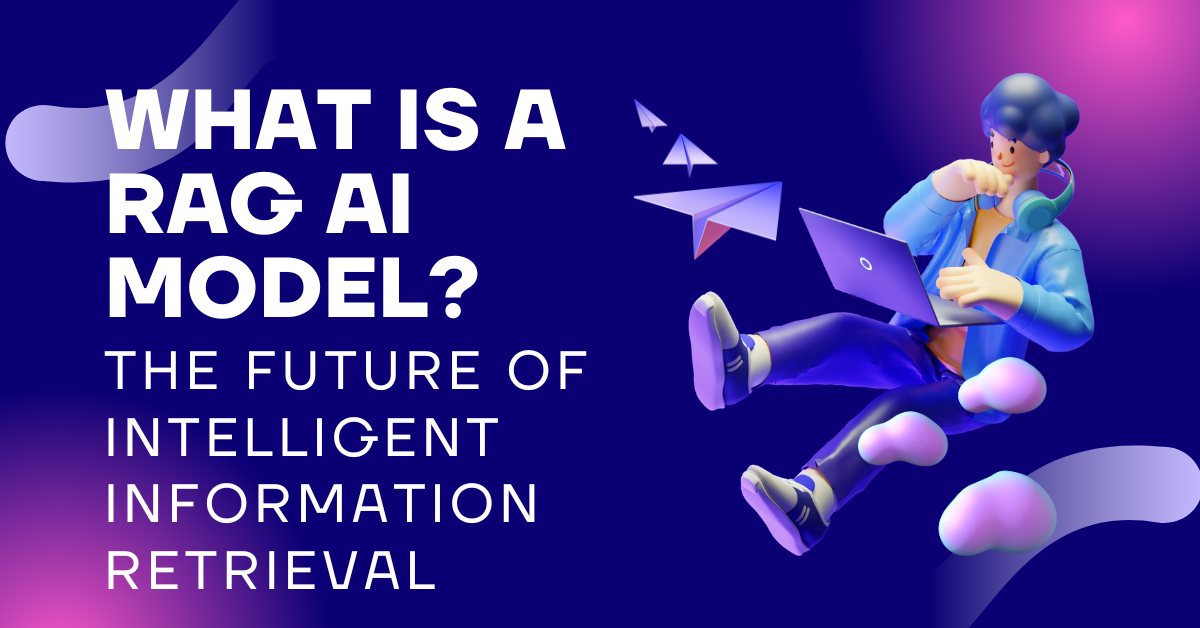Finding the right information quickly is like searching for a needle in a haystack. RAG AI models are changing how machines find, understand, and create information. But what is a RAG AI model, and why is it so important in AI? This article will cover everything you need to know about RAG AI models, from what they are to their future possibilities.
What is a RAG AI Model?
RAG stands for Retrieval-Augmented Generation. It’s a new AI model that mixes information retrieval and text generation. Unlike old language models, RAG AI models find information from outside sources and use it to give accurate answers.
Key Components of a RAG AI Model
- Retriever: Searches outside data to find what’s needed.
- Generator: Uses found information to create clear, accurate answers.
- Integration: Merges retrieval and generation for top-notch results.
Why RAG AI Models Are a Game-Changer
RAG AI models fix big problems with old language models, like:
- Outdated Knowledge: Old models use static data that gets old. RAG models get fresh info.
- Accuracy: They find facts from trusted sources, making answers more reliable.
- Context Awareness: They give answers that fit the situation better by using outside data.
Real-World Impact
- Customer Support: Gives quick, accurate answers to questions.
- Healthcare: Finds the latest medical research and guidelines for doctors.
- Education: Gives students the latest info and explanations.
- Content Creation: Helps writers and marketers make fact-based content fast.
How Does a RAG AI Model Work?
The RAG AI model works in three main steps:
1. Query Processing
The model first understands the user’s question and its context.
2. Information Retrieval
The retriever part looks for the best information in outside sources. This could be:
- Databases
- Academic papers
- Websites
- Internal company documents
3. Response Generation
The generator part uses the found info to create a clear, accurate, and fitting response.
Real-World Applications of RAG AI Models
RAG AI models are changing industries. Here are some examples:
1. Customer Service
Companies like Zendesk and Intercom use RAG chatbots for fast, accurate support. This boosts customer happiness and cuts down on wait times.
2. Healthcare
RAG AI models help doctors get the latest research and guidelines. This helps them make better decisions.
3. Education
Platforms like Khan Academy and Coursera use RAG models. They give students the latest info and personalized learning experiences.
4. Legal Research
Law firms use RAG AI to find case laws and legal precedents fast. This saves time and boosts accuracy.
5. Content Creation
Writers and marketers use RAG models for articles and social media. They ensure the content is accurate and relevant.
Benefits of RAG AI Models
RAG AI models bring many benefits:
- Up-to-Date Information: Get real-time data from outside sources.
- Improved Accuracy: Cut down on errors with verified info.
- Enhanced Relevance: Give answers that fit the context.
- Efficiency: Automate tasks to save time.
- Scalability: Handle lots of queries and data easily.
Challenges and Limitations
RAG AI models face some challenges:
- Data Quality: The info’s accuracy depends on the data quality.
- Computational Costs: Processing big datasets can be costly.
- Bias: Data sources might have biases, affecting the model.
- Privacy Concerns: Accessing sensitive data raises privacy issues.
The Future of RAG AI Models
The future of RAG AI models looks bright. Here are some trends to watch:
- Integration with Multimodal AI: Use text, images, and audio for better info.
- Personalization: Make responses fit individual users better.
- Ethical AI: Work on fairness, transparency, and accountability.
- Edge Computing: Use RAG models on local devices for faster processing.
Frequently Asked Questions (FAQs)
1. What is the difference between RAG AI and traditional language models?
Traditional models rely on pre-trained data. RAG AI models use external info for more accurate responses.
2. Can RAG AI models access real-time data?
Yes, RAG AI models can get real-time data, making them more current than traditional models.
3. Are RAG AI models expensive to implement?
They can be costly, but the benefits of better accuracy and relevance often make it worth it.
4. What industries benefit most from RAG AI models?
Healthcare, customer service, education, legal research, and content creation see the most benefits.
Conclusion: Unlock the Power of RAG AI Models
RAG AI models are changing how we get and use information. They offer unmatched accuracy, relevance, and efficiency. Their uses range from customer service to healthcare, with endless possibilities ahead.
Ready to explore the future of AI? Share your thoughts in the comments or subscribe for updates on RAG AI and AI breakthroughs. Let’s shape the future together!
Suggested Multimedia
- Infographic: “How RAG AI Models Work”
- Video: “Real-World Applications of RAG AI Models”
- Table: “Benefits of RAG AI Models Across Industries”
